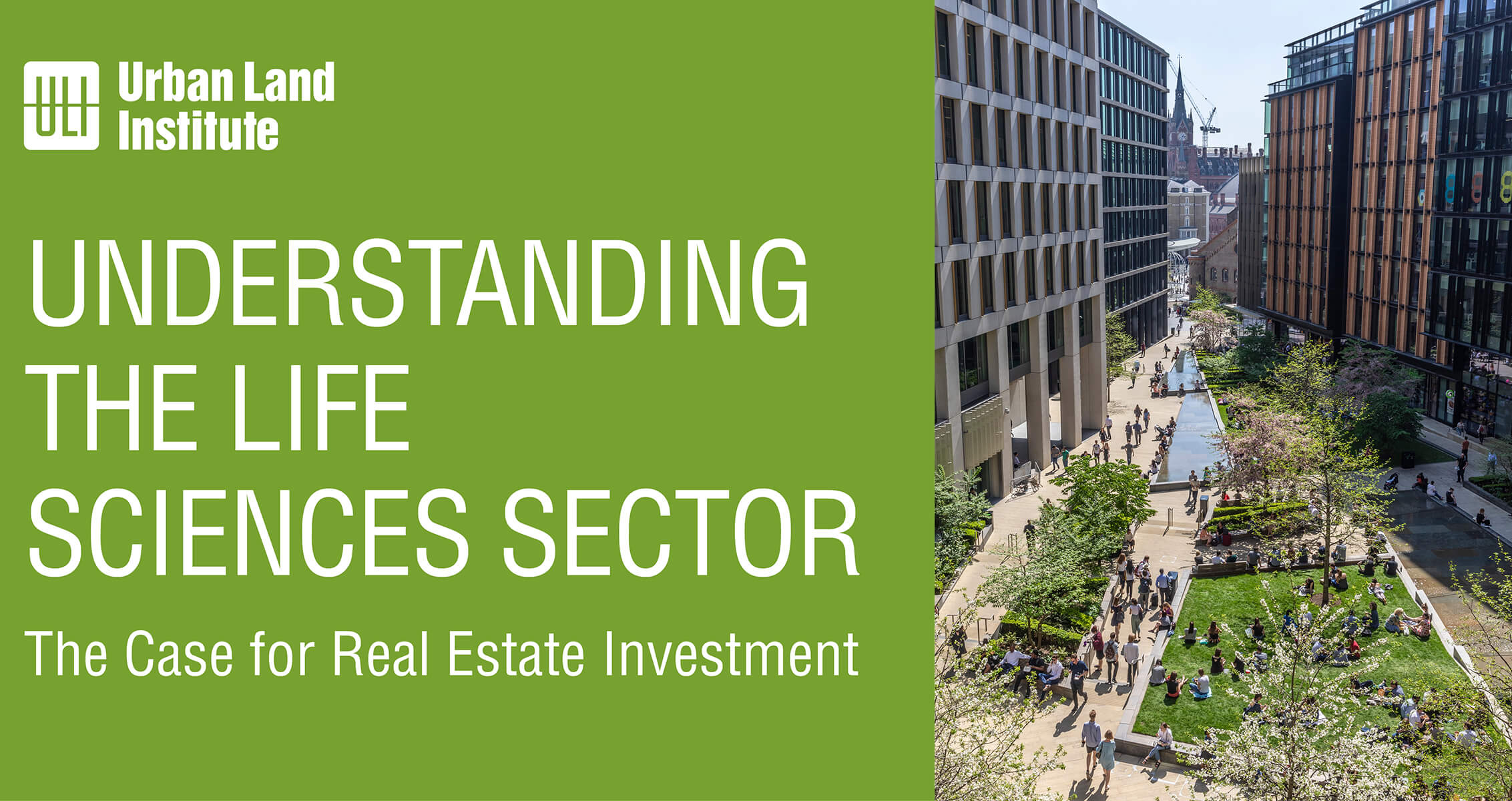European life sciences real estate remains an immature segment of the market but there are compelling and immediate opportunities for development and investment, according to a new research paper from the Urban Land Institute (ULI).
Understanding the Life Sciences Sector: The Case for Real Estate Investment is published as societal and demographic factors are driving growth in the life sciences sector and governments across Europe are realising the importance of the sector for future economic growth.
An ageing population, growing prevalence of lifestyle diseases, rising health care spending and increasing crossover with technology are strong structural growth drivers for the life sciences sector, now fuelled by the Covid-19 pandemic. These growth drivers, coupled with general trends, such as urbanisation, the war for talent and focus on sustainability, give real estate a vital role in the further development of the sector.
Real estate investors and developers are showing increasing interest in life sciences real estate based on the structural growth potential of the sector, coupled with the diversification benefits of an anti-cyclical play. A ULI member survey found investor interest in life sciences real estate attributed to competitive risk-adjusted returns (35%), the potential for capital growth (28%) and diversification (20%).
This interest was also seen in ULI and PwC’s Emerging Trends in Real Estate Europe 2021, which identified life sciences as one of the top three sector prospects in Europe for real estate investment. ULI Europe CEO Lisette van Doorn comments: “Following the growth path that life sciences real estate followed in the U.S. over the past couple of years, this report shows a similar strong case for investment in Europe’s life sciences real estate, although there are still some hurdles to tackle.”
“Established real estate players in the U.S. life sciences market have capitalised on demand there and started to look further afield for the next top life sciences destinations. Some are exploring opportunities in Europe and making acquisitions. They are being followed by real estate players within Europe.”
The key to attracting and retaining talent is shifting to the appeal of the urban environment, the presence of amenities and the affordability of housing and workspace. Traditionally, factors driving a focus on specific countries, cities and locations included the availability of supporting government policies and funding, the availability of venture capital to help grow spin offs and start-ups and the existence of a strong eco-system between universities, government and the life sciences industry.
This growing preference of the life sciences sector for urban locations is another factor that attracts real estate investors as many already own buildings in those areas and see the opportunity for repurposing existing buildings. Technology trends accelerated by the pandemic have presented structural issues for some of the more traditional real estate sectors. When it comes to adaptation for life sciences, retail buildings have the advantage of delivery access, goods storage areas, plant space and high floor-to-ceiling heights. Industrial buildings can also lend themselves well to repurposing because of adaptability and cheap build.
Tenant requirements in the life sciences sector tend to be very specific and volatile, depending on the tenant’s phase of development, ranging from start-ups and scale-ups to mature pharma companies. Demand includes a wide variety of different types of lab spaces in addition to office and manufacturing space and may change rapidly if organisations get access to venture capital and other funding sources following a promising idea. Inexperienced real estate players tend to struggle with this uncertain and specific tenant demand, lacking the operational expertise.
Additional challenges that have come to the surface include lack of suitable real estate, data and knowledge about the sector. To overcome these barriers, the report calls for more transparency around transactions, building specifications and rental and pricing levels to give confidence to investors and remove a reliance on assumptions as to risk and return. Alignment of interest between owners and occupiers is key for life sciences given the large diversity and volatility in occupier demand, which requires continuous adaptation, flexibility and hands-on stewardship.
The report was funded and supported by a select group of ULI members participating in a steering group. Didobi was the research partner for the report, which was sponsored by AECOM, Arup, BioMed Realty, Perkins&Will, Precis Advisory, Savills and Stanhope.
The full report is available at europe.uli.org/life-sciences


